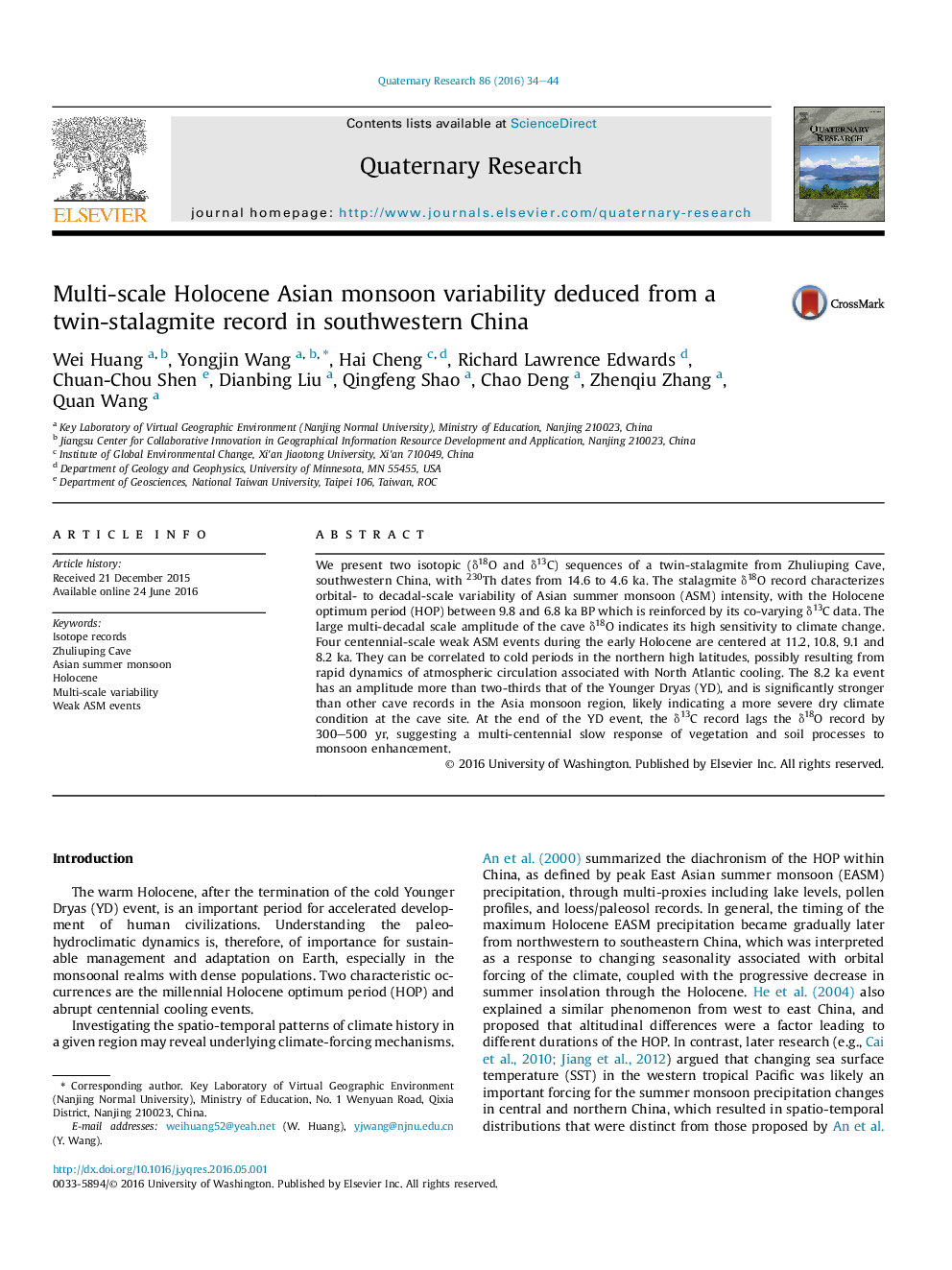| Article ID | Journal | Published Year | Pages | File Type |
|---|---|---|---|---|
| 1045029 | Quaternary Research | 2016 | 11 Pages |
We present two isotopic (δ18O and δ13C) sequences of a twin-stalagmite from Zhuliuping Cave, southwestern China, with 230Th dates from 14.6 to 4.6 ka. The stalagmite δ18O record characterizes orbital- to decadal-scale variability of Asian summer monsoon (ASM) intensity, with the Holocene optimum period (HOP) between 9.8 and 6.8 ka BP which is reinforced by its co-varying δ13C data. The large multi-decadal scale amplitude of the cave δ18O indicates its high sensitivity to climate change. Four centennial-scale weak ASM events during the early Holocene are centered at 11.2, 10.8, 9.1 and 8.2 ka. They can be correlated to cold periods in the northern high latitudes, possibly resulting from rapid dynamics of atmospheric circulation associated with North Atlantic cooling. The 8.2 ka event has an amplitude more than two-thirds that of the Younger Dryas (YD), and is significantly stronger than other cave records in the Asia monsoon region, likely indicating a more severe dry climate condition at the cave site. At the end of the YD event, the δ13C record lags the δ18O record by 300–500 yr, suggesting a multi-centennial slow response of vegetation and soil processes to monsoon enhancement.
